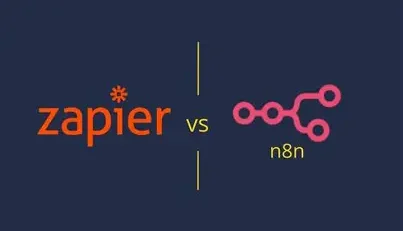Mobile Learning Education vs Traditional Classroom Comparison
When thinking about how we learn today, the debate between mobile learning and traditional classrooms often comes up. I’ve done my share of exploring both avenues, and I want to share my insights with you. Learning is essential in our fast-paced world, and the methods we choose can significantly impact our journey. In this post, I’ll compare mobile learning to traditional classroom education. By the end, I hope you’ll have a clearer picture of how each method can benefit learners like you.
Understanding Mobile Learning
Mobile learning refers to education that takes place using mobile devices. This could be anything from smartphones and tablets to laptops. What excites me about mobile learning is its accessibility. You can learn anywhere and at any time, making it incredibly flexible. According to recent studies, around 77% of adults now own a smartphone, which means a vast majority have the potential to engage in mobile learning.
One of the critical advantages of mobile learning is the availability of resources. There are countless applications and online platforms designed to cater to various subjects and skills. This allows for personalized learning experiences. You can choose what to study and when to study it, facilitating a deeper understanding of the material.
Moreover, with mobile learning, the content can be updated more rapidly. In traditional settings, textbooks become obsolete after a few years, but online resources can be continually enhanced. This ensures that what you’re learning is current and applicable to real-world situations.
The Traditional Classroom Experience
On the other hand, traditional classrooms rely on in-person instruction and a set schedule. Many of us fondly remember the classroom setting—sitting at a desk, listening to a teacher, and interacting with fellow students. This method of learning has been around for centuries and fosters a sense of community.
In a traditional classroom, the face-to-face interactions can provide immediate feedback. If you have questions or need clarification, you can raise your hand and get real-time responses. Additionally, collaborating with classmates can enhance your understanding through group discussions and projects.
However, traditional classrooms may also present challenges. The rigid structure can sometimes limit the pace of learning. Students who grasp concepts quickly might feel bored while waiting for their peers to catch up. On the flip side, those who require more time to understand a subject may struggle to keep up with the class.
Mobile Learning: Flexibility and Convenience
When comparing mobile learning to traditional classrooms, flexibility is arguably the most significant advantage. Imagine being able to study on the bus, during lunch breaks, or even while waiting for an appointment. With mobile learning, you have that freedom.
Additionally, the convenience of mobile learning means that you can tailor your study sessions based on your daily schedule. If you’re an early bird, you might start learning at dawn. If you prefer a late-night study session, that’s also possible. This adaptability allows for a more relaxed learning environment, which can lead to better retention of information.
Statistics show that mobile learners can engage with material almost 50% more than their classroom counterparts. This level of engagement can lead to more significant success when it comes to understanding complex topics.
Traditional Classroom: Structure and Accountability
While mobile learning offers freedom, traditional classrooms provide essential structure. Many students thrive on routine and know exactly when and where they need to be. This structure can help instill discipline, which is necessary for academic success.
Moreover, being in a physical classroom encourages accountability. You have set schedules, deadlines, and responsibilities to meet. This environment fosters a sense of commitment that might be harder to establish when learning independently through mobile devices.
Peer accountability is also a strong emphasis in traditional classrooms. You see classmates regularly, and this can motivate you to stay engaged and keep up with your studies.
Interactivity and Engagement: A Comparison
One of the main goals of education is to foster engagement. Mobile learning often incorporates various forms of interactive content. From quizzes to interactive videos, the range of resources can keep you actively involved. This interactivity enhances motivation, making it more likely that you’ll stick with the material.
In traditional classrooms, engagement often comes from discussions and hands-on projects. Teachers can use group activities or demonstrations to create a lively learning environment. Some individuals learn better in this interactive setting, where they can physically participate and express their thoughts.
Research suggests that students in interactive learning environments retain information better. They develop critical thinking skills by discussing ideas and collaborating with peers. However, it’s essential to note that effective mobile learning can also be highly interactive, depending on the resources utilized.
Personalization vs. Standardization
Mobile learning opens the door for personalization. Each learner has different preferences, strengths, and weaknesses. With mobile platforms, you can tailor your learning experience. Perhaps you excel at visual learning and prefer video tutorials. Or maybe you benefit from reading and taking notes. You get to choose what works best for you.
On the contrary, traditional classrooms tend to follow standardized curricula. While teachers can differentiate instruction, it can be challenging to cater to every student’s unique learning style. This standardization ensures that all students meet state requirements but may not address individual interests and needs.
The range in personalization within mobile learning can be incredibly beneficial. According to recent reports, personalized learning leads to a 30% increase in learner satisfaction. This statistic highlights how valuable mobile learning can be for those seeking a more tailored approach.
The Cost Factor: Mobile Learning vs. Traditional Education
Cost is a crucial factor for many learners. When it comes to traditional learning, we cannot ignore tuition fees, textbook costs, transportation, and sometimes even accommodation. These expenses can add up quickly, making education less accessible for some.
In contrast, mobile learning often requires a much lower investment. Numerous free or low-cost resources are available online, allowing learners to access high-quality education without breaking the bank. Since many mobile learning platforms offer open-access courses, students can often explore subjects without any financial commitment.
Additionally, the ongoing costs for traditional learning can be significant. Enrollment fees, supplies, and other-related expenses can be burdensome. Mobile learning is typically more flexible in terms of costs, which is a crucial factor for today’s learners.
Final Thoughts: Merging the Best of Both Worlds
In the end, both mobile learning and traditional classrooms have their strengths and weaknesses. The choice between them often depends on individual preferences, learning styles, and life circumstances. Some learners thrive in structured environments, while others flourish in flexible settings.
Combining elements of both may provide the most effective approach. For example, using mobile learning resources as supplementary material for traditional classroom instruction can create a more enriching experience. The key is to leverage the best aspects of each approach.
As we move forward, embracing mobile learning alongside traditional education opens up new possibilities for everyone. The future of learning is vibrant and diverse, touching the lives of learners all over the globe. By understanding and respecting the merits of both systems, we can create more inclusive and effective educational experiences.
If you’re curious to explore more about mobile learning, consider checking out resources that delve into effective eLearning development techniques. Ultimately, whether you prefer mobile learning or a traditional classroom, what matters most is finding the path that works best for you.












Leave a Reply